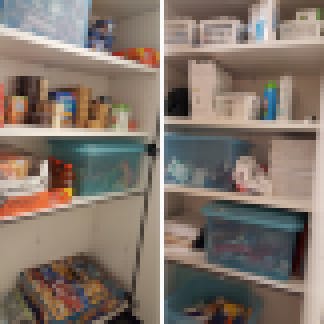There is a cartoon that has gone viral in the teaching community. Maybe you’ve seen it: It shows a child carrying large bags labeled with various challenges—hunger, illness, homelessness. It reads, “Could someone help me with these? I’m late for math class.”
Most of us understand at first glance what it represents. Every student comes to us on the first day of school with baggage of their own. The loads they carry vary in shape and size, and sadly, some carry too heavy a load.
The reality is that in order to effectively apply Bloom’s Taxonomy, we must meet the needs in Maslow’s Hierarchy. Before a student can remember, understand and apply what they’re learning, their physiological needs, such as shelter, food and clothing must be met, and they must feel that they are safe, loved and that they belong.
Balancing academics with “everything else” is not a new task for teachers, it’s a challenge we’ve always faced. And in my thirteenth year of teaching, it hasn’t gotten easier. But now at least, my school is doing something about it.
I’ve been teaching at Moores Mill Intermediate School in New Market, Ala., for the last five years, though my position has changed over time. Throughout my career, I have taught special education in self-contained classrooms and collaborative team teaching environments, and this year, I became a part-time school counselor, though I’m still in the classroom for a portion of the day.
Shifting from a classroom teacher to a school counselor has provided me with a broader perspective on our student body as a whole. Moores Mill serves a high population of students from low income families, with 44 percent of our students receiving free and reduced lunch. While I had seen first-hand the social-emotional needs of my own students as a classroom teacher, it was on a much smaller scale. In my new role, the number of students I see each week has dramatically increased and I’ve noticed that for some of our students, what may appear to be a social-emotional issue at first glance, actually stems from the fact that their basic needs aren’t being met.
I’ve always been involved with coordinating service projects at my school, and once I recognized that many of our students were facing issues outside of academics and behavior, I started to wonder if there was something we could build on-site to support our students and families in meeting their basic needs.
In 2016, I started poking around and saw a post in a teacher group I’m a part of on social media about an idea I thought could work at my school. It was from a local teacher, Jennifer Walker, who was opening a pop-up shop at her middle school that would provide food, clothing, toiletries and other basic needs for students, who could stop by anytime to peruse and take what they needed. Her idea was inspired by a story she read four years prior about a principal in Washington, N.C., who opened a similar shop to meet the needs of underserved students.
Walker was looking to support other teachers in our county in opening up pop-up shops at their schools. The timing couldn’t have been better. I responded immediately and Moores Mill became one of the schools Walker would support—only we’d call it a “care closet.”
Creating a care closet at our school took time and planning. I got my principal’s permission in January, found a space in our school and started to socialize the idea with my colleagues to see if anyone was interested in volunteering. Our school partnered with House of the Harvest, a local food bank that Walker and her husband had started a year earlier to serve the community, which directly supported the schools’ shops. The Walkers led us through the process of getting started and Jennifer recommended that we start small with three basic item types: food, clothing and toiletries. Books were also mentioned as a high-need area, but one that was tabled until we were able to have our closet running with more basic needs. In March, we opened the doors to our closet.

For the first two years, House of the Harvest provided us with start up supplies to meet the basic needs of our students, including food and toiletries. But at the end of our first year, we realized that if we wanted to make the closet sustainable, we needed to develop a fundraising strategy. Each shopping trip I took could cost up to $300, depending on the time of the year, and I was making two or three trips a year. I became the teacher sponsor for the Moores Mill closet, meaning I organize our fundraising efforts to keep it going and ensure that it stays stocked. I started tapping into parent organizations and local churches to secure funding and donations for our care closet. This year, we’ve raised $1,000 from the community.
Stocking the closet takes work, but the greater challenge for us was convincing the students who needed the items in the closet to visit. We know that if a student is hungry, academics will be the last thing on their mind—but sharing that information with a teacher or school leader is difficult for many.
Though our teachers and administrative team are aware that we have the closet and will often tell me if a student demonstrates a need, getting kids to come hasn’t been easy. Since the doors opened about four years ago, we’ve served more than 30 students. With 740 students at our school, many of them facing poverty, we’d like to see more students take advantage, but we recognize that building trust takes time.
Today, we still actively stock the care closet with food, clothing and toiletries and this year, I’m revisiting the initial request for books. After I was reminded about this need by one of my students, I experimented with ordering some books for the closet and have seen an impact on student engagement for that child. I started identifying other kids at our school who don’t have access to books in their home to see if they’d be interested in visiting the shop and taking home a book. While we have a library at our school and in our community, the idea of owning a book is very exciting for some of our students and we’re seeing an uptick in care closet visitors.
The challenges have changed over time. First, it was about securing funding and stocking the closet, then it was about getting kids to come and take advantage of it. Now, it’s about staying responsive to the changing needs of our student population. My hypothesis is that the need for food, clothing and toiletries aren’t going away, but listening to what students want is profoundly important as well. And we plan to continue keeping our ears to the ground and growing and changing with the needs of our community.


